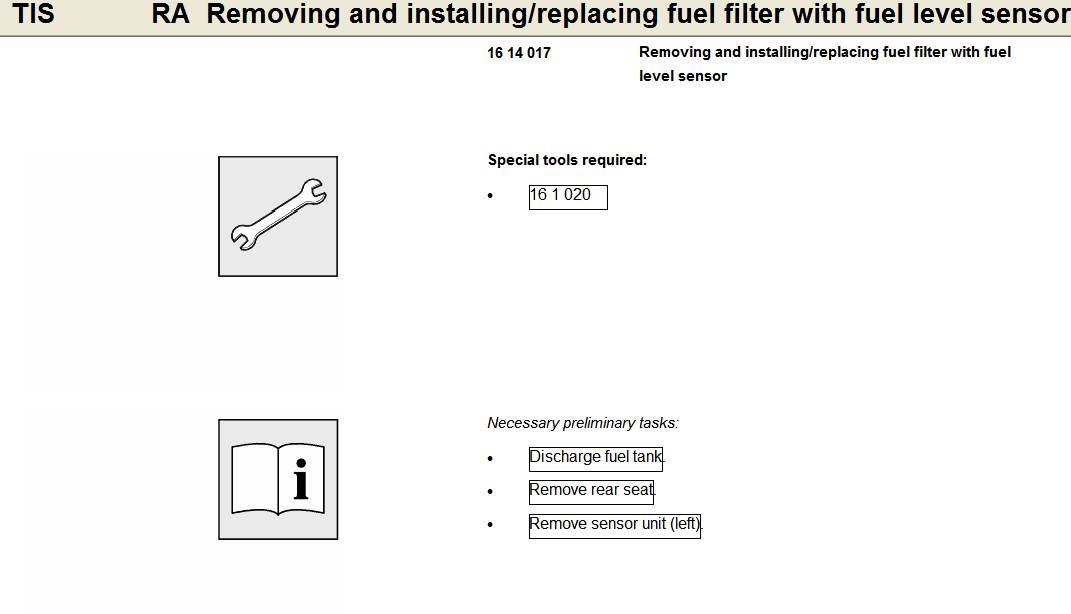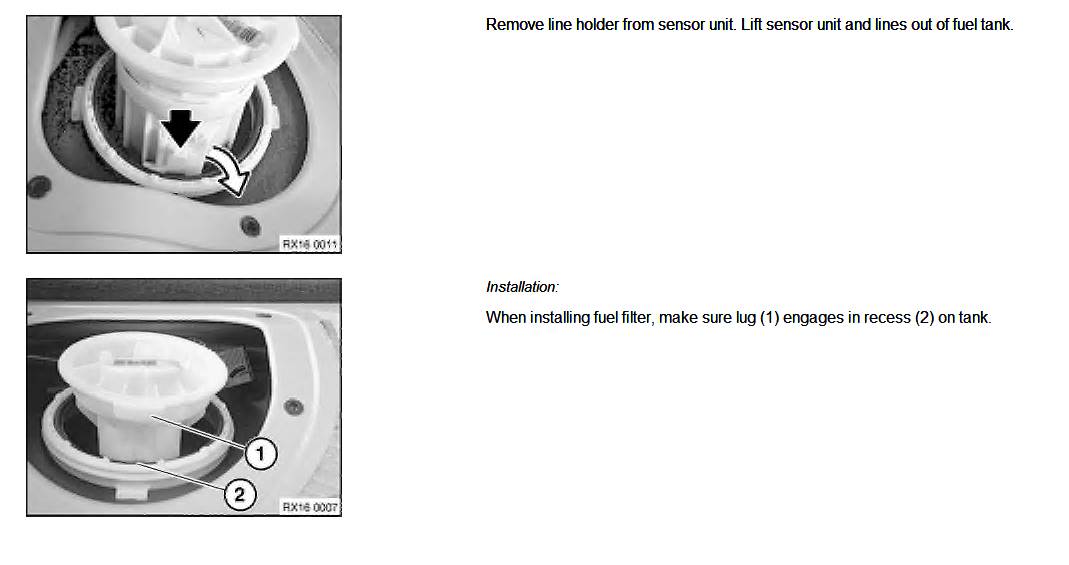Replacing Mini Cooper (R50/53) Fuel
Filter
According to
Mini the fuel filter is a lifetime item that does not need to be replaced…..but
we all know “lifetime” to the manufacturer is lifetime of the warranty or free
service period. After reviewing forum write-ups, I purchased the Mini filter
kit (P/N 16146757196) from Way Motor
Works and decided to spend an afternoon on the replacement. The kit
consists of the fuel filter, two small o-ring seals, one large o-ring seal, and
two tank seals (only one will be used for the fuel filter replacement, the
other is for the driver side access port/fuel pump which we will not be
removing)
I reviewed
the following write-ups prior and found them to be very helpful, my write-up
hopefully serves to supplement the existing knowledge base and is in no way a
replacement:
Fuel
Filter Replacement by NAM’s StreetMod
Fuel
Filter DIY Guide by NAM’s Eurothrasher
Standard
Disclaimer: ANY USE OF THIS INFORMATION
BY YOU IS AT YOUR OWN RISK. I ASSUME NO LIABILITY FOR YOUR USE OF THE BELOW
INFORMATION.

NOTE: TIS Instructions and torque specs at bottom of
write-up for reference.
Rear Seat Base Removal:
The gas
tank access port to get to the fuel filter is on the passenger side (
First step
is to tilt and slide forward both front seats as far as they can go- room is a premium
in the back seat area. The rear seat is removed by lifting up on each side to
unclip front of seat base, removing the anchor point covers by pulling them to
unclip, and then removing the seat base:
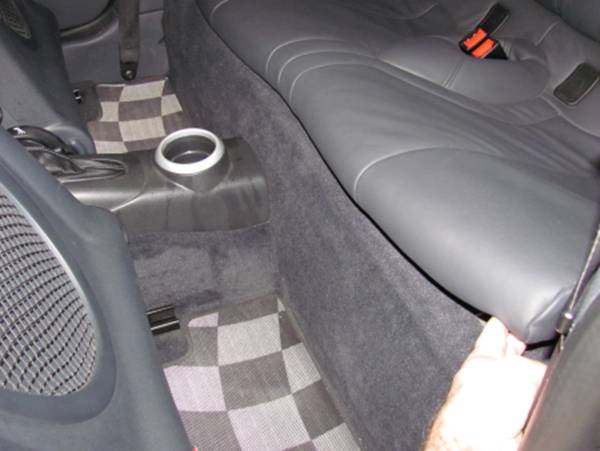
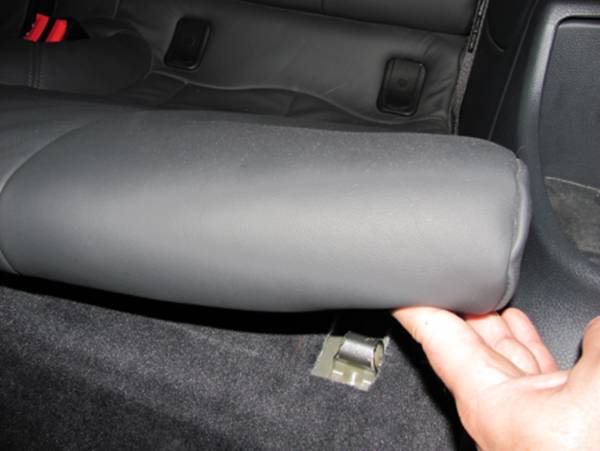
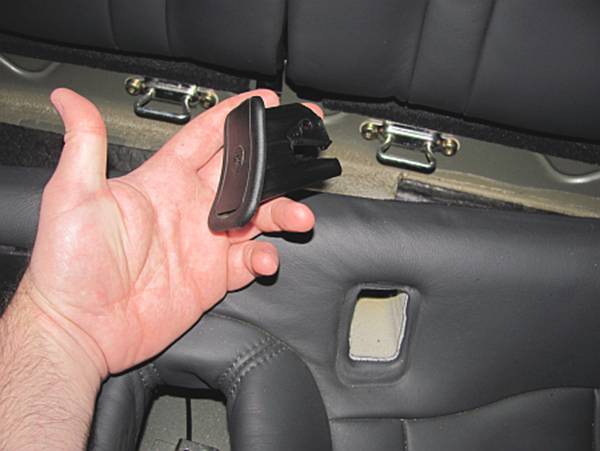
Fuel Filter Removal/Installation:
NOTE:
It is a GOOD idea to have at least ¼ tank of gas, you will need to reprime the
fuel pump when the filter is replaced.
Remove the
5 nuts holding the access port cover to the body using a 10mm socket driver:
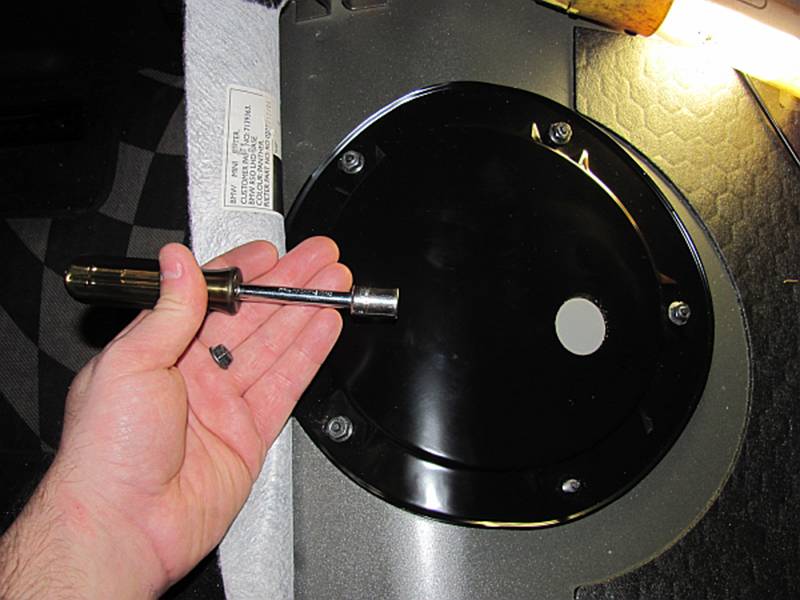
I found a
large putty knife helpful to convince the cover it can be removed, I worked
around the cover until it was free enough to remove by hand. A smaller putty
knife or flat blade screw driver might also be used to accomplish this, the
foam weather strip can be pretty stubborn after years and mileage:
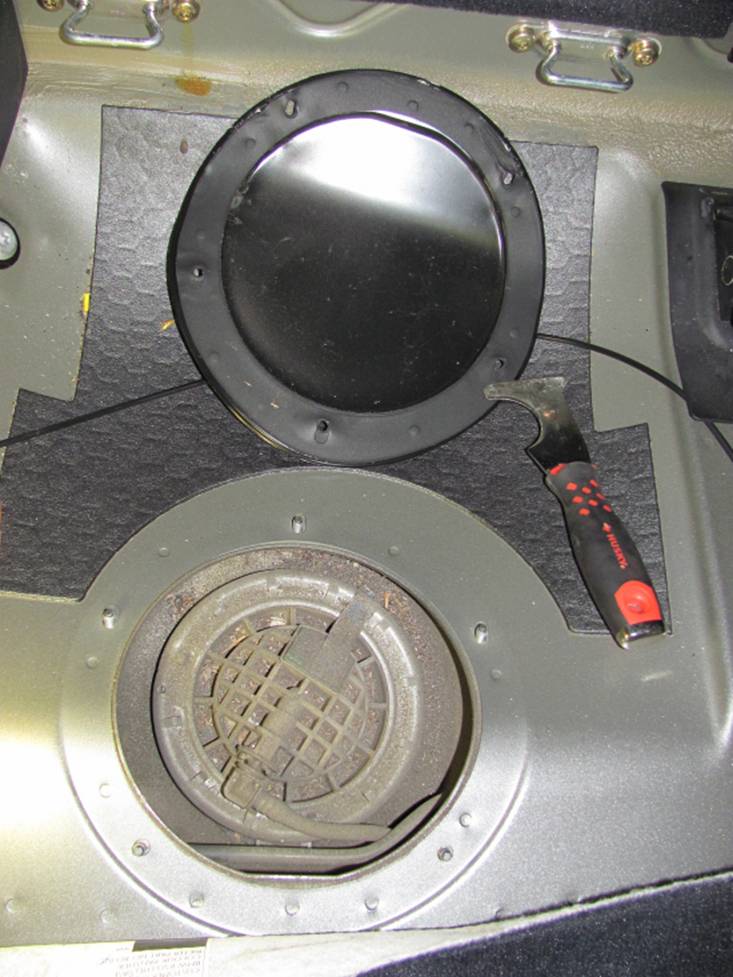
The filter
canister cover might look pretty dirty, you can use an air compressor to blow
the dirt out OR a vacuum cleaner and rag if you want to keep your car dust
free- I chose the vacuum cleaner/rag method. If you look closely through the
dirt you will see the unbroken seal at the back, it appears my filter has NEVER
been changed. It does not need to be sterile but you don’t want loose dirt
falling into the tank:
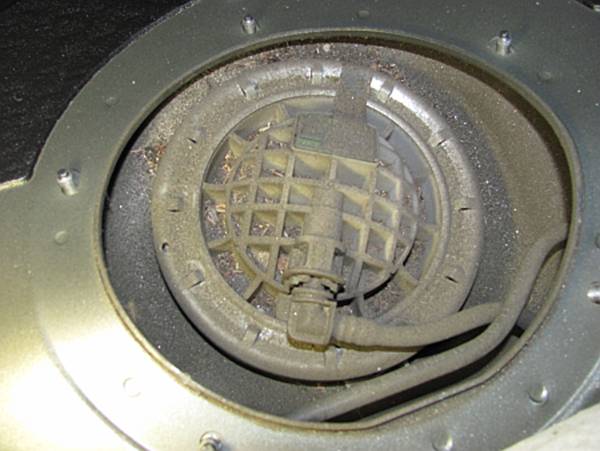
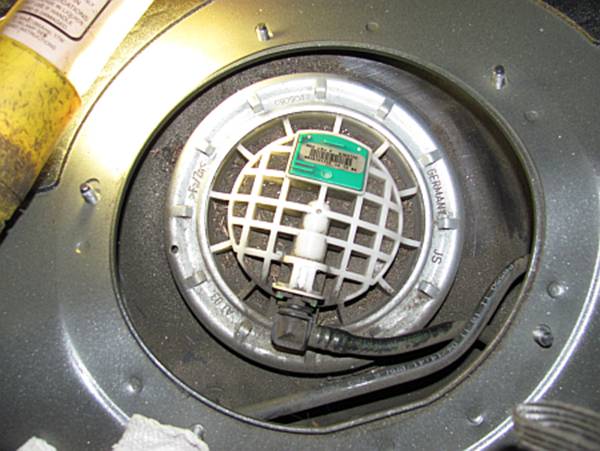
You might
want to use duct tape/plastic around the access port to keep potential gas leaks
and spray off of the carpet and under-seat insulation. You might also want to
have plenty of shop towels on hand and close by…..and if you like gloves you
will need some that are gas resistant, I'm not a fan and choose not to use
them.
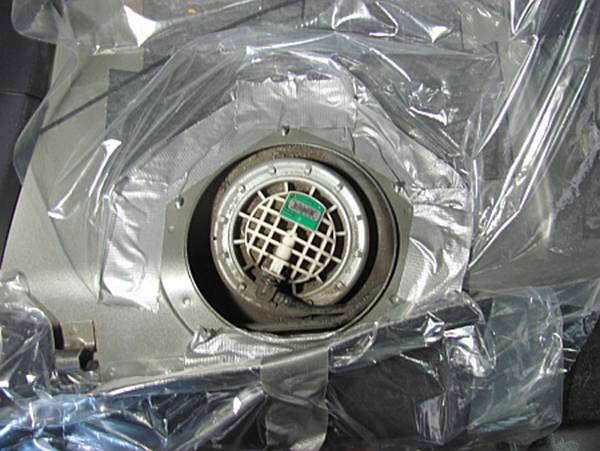
If you have just driven your car, it might be advisable to remove the fuel pump
relay from the driver side fuse box and crank the car a few times to relieve
fuel pressure. My car sat overnight and I guess this was long enough for the
fuel pressure to bleed off, removing the fuel line was uneventful. Push the two
retaining clips on either side in and pull the fuel line out, covering with a
rag to be safe from any spray. Once unplugged you will want to tape the fuel
line out of the way:
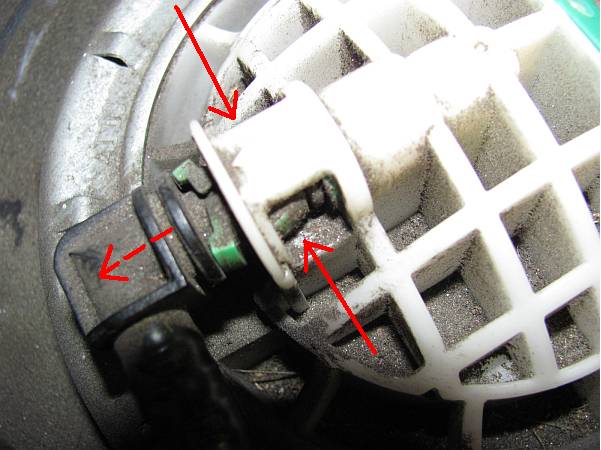
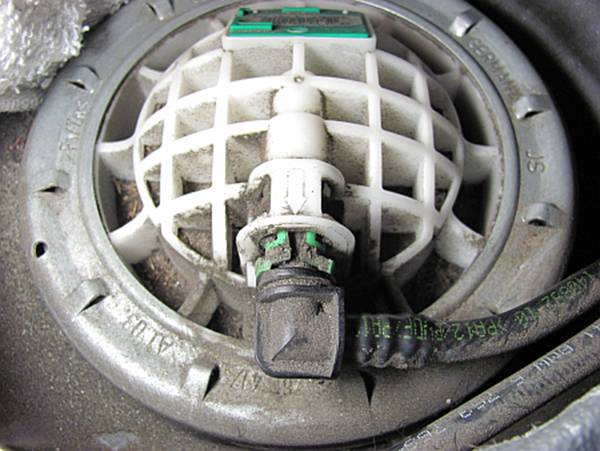
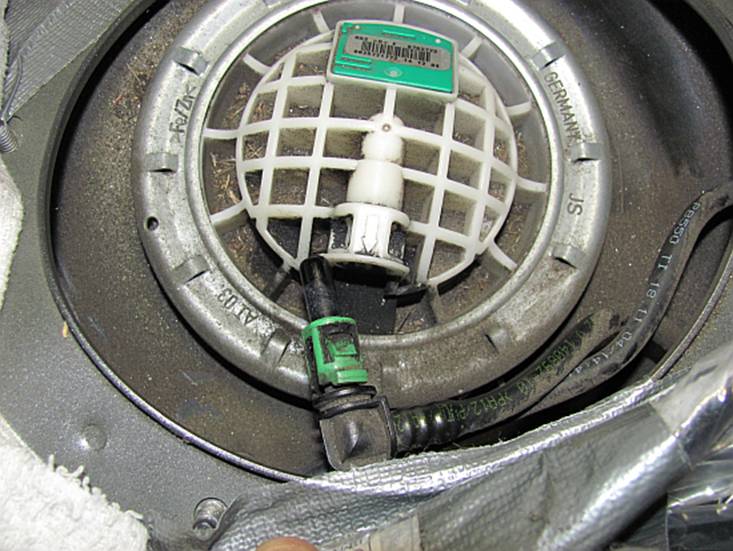
To remove the
retaining ring, I used the same screwdriver/rubber mallet as others did, once
the ring is loosened a bit with this method it can be unscrewed by hand and
removed (NOTE the words around the perimeter of the ring first and how they are
oriented in relation to the canister lid- or better yet take a picture, this is
how I re-torqued the retaining ring without the BMW removal/installation tool
that could be used with a torque wrench):
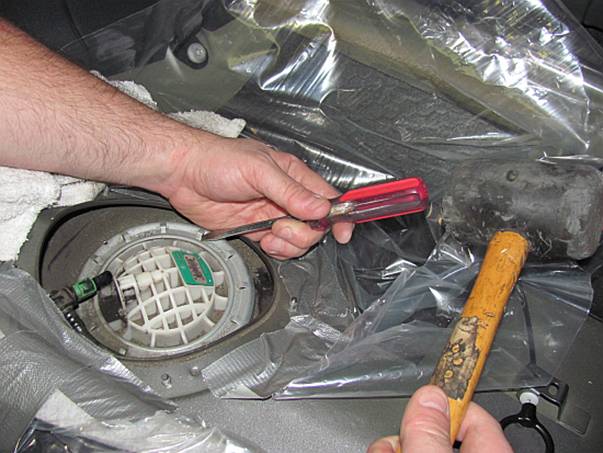
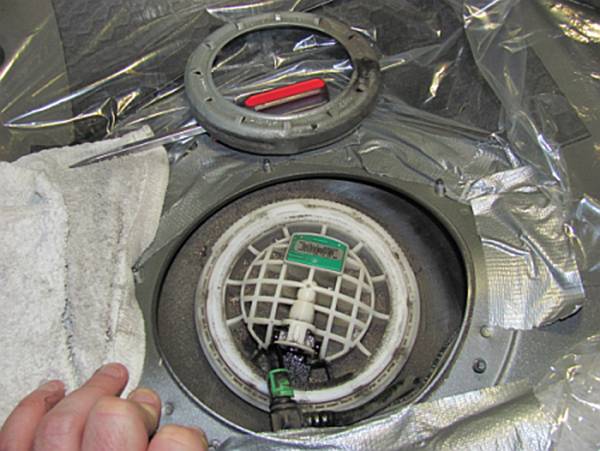
A screwdriver can be used to start coaxing the fuel filter canister out of the
tank, the seal will most likely come with it:

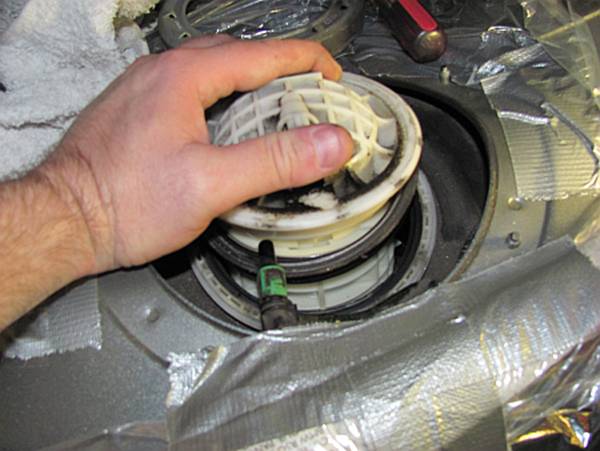
You will
need to hold the bottom part of the canister with one hand while unscrewing the
lid with the other, be careful not to allow the base to twist since it is
attached to other plastic parts, wiring, etc. that could break. Other guides
say not to lift the canister more than 3-4 inches since the fuel pump hoses,
wiring, and float are attached to the bottom- however, you can lift it a bit
higher before you get into trouble, maybe until you can at least get your hand
around the base and lid at the same time.
I could not get a good enough grip to break the lid loose until I
mistakenly removed the holder for the fuel pickup(?) and had to lift the
canister out of the tank a bit more, no more fear of breaking something. The
fuel pickup holder(?) is clipped to the side of the canister with one clip and
sits in a track, in my effort to separate the lid I had hooked the clip and
released it and it fell into the tank- it didn’t go far since it is attached.
Easily reconnected before installing the new seal at reassembly, I was careful
to make sure it did not interfere with the wiring and float before re-attaching
to the canister. I don’t advise you to do this, but if you make the same
mistake I made the info is here- I also found a pic of the removed assembly so
you know what you are working with:

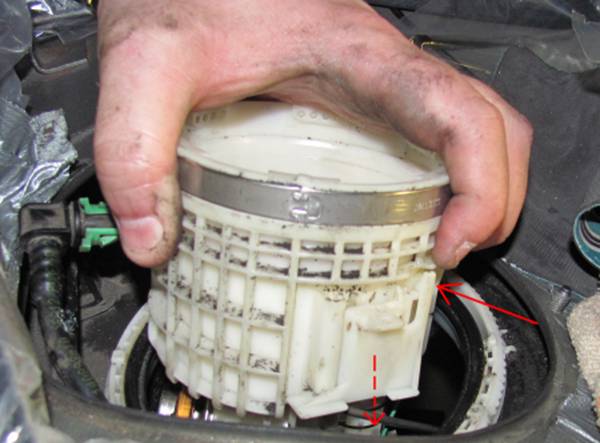

If you
still think fuel filters are a lifetime item after looking at the photo below,
raise your hand J
Be careful with the filter, it is nasty and the black grunge will get on
anything it touches, I had my helper standing by with some plastic bags to
place it in for disposal:
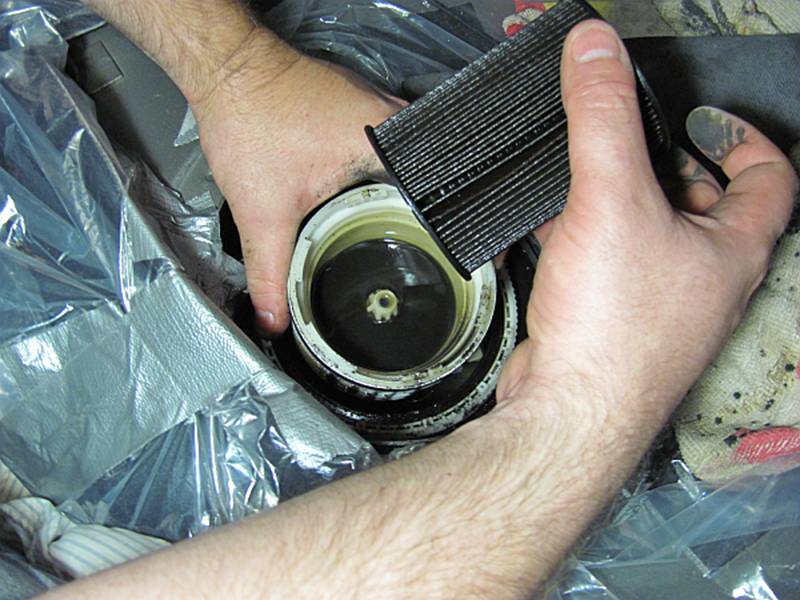
The
standing gas in the filter canister is removed, a turkey baster retired from
kitchen use can be used to extract it into a container, I used my topsider for
one shot removal. I used a pick to remove the small canister o-rings, there is
one in the base and one in the lid. The large o-ring from the canister lid was
floating in the dirty gas. I used shop towels and q-tips to clean the grunge
out of the canister:
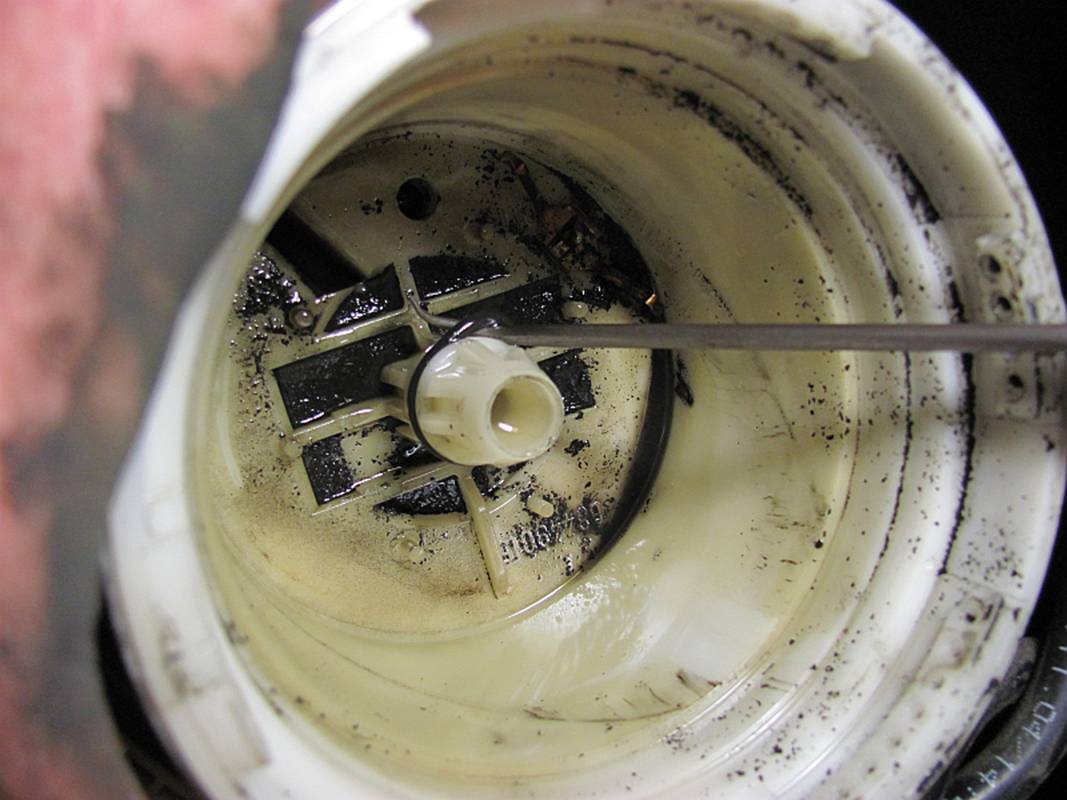
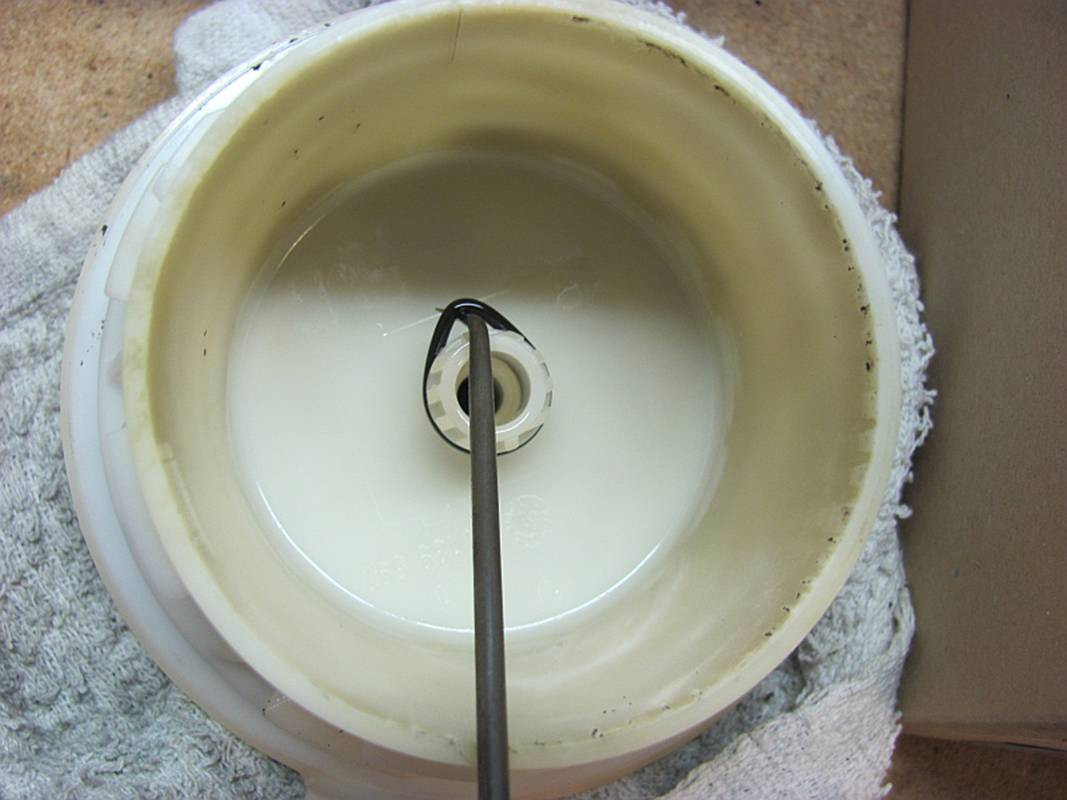
The small
o-rings were replaced where they had been removed, the large o-ring slides on
the canister lid up to the lip, Vaseline was used on ALL seals for ease of
assembly:
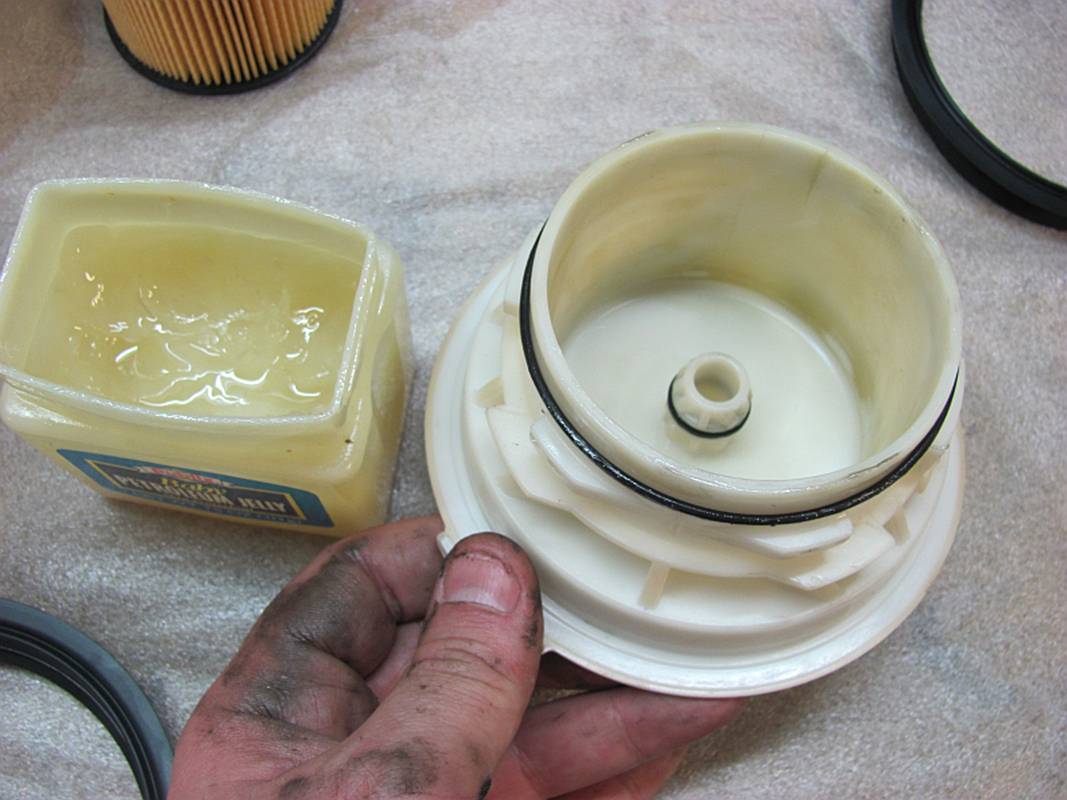
Another
thought about the lifetime fuel filter before installing in canister…….
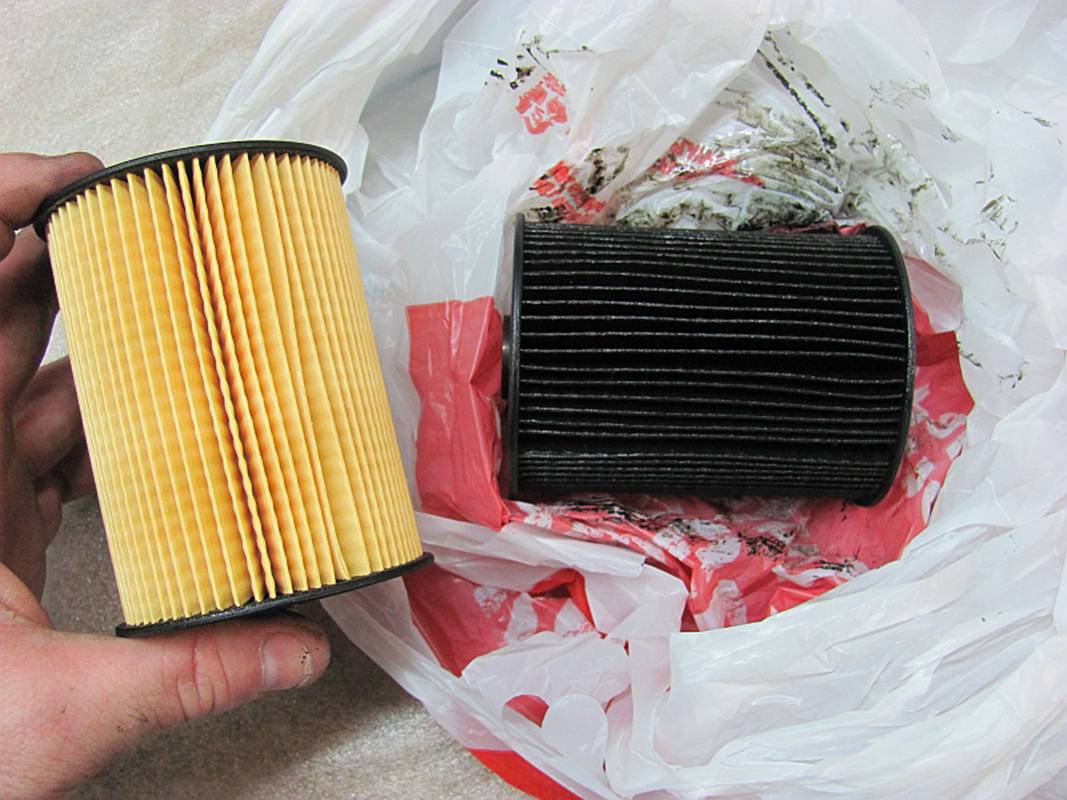
The filter
was placed into the canister, it slides onto the post and over the new o-ring
until it bottoms out. The new tank seal is also vaselined (is that a word?) and
placed over the canister- Note the seal has verbiage imprinted on one side
“THIS SIDE DOWN” and it means just what it says, that side of the seal faces
down towards the tank when installed:

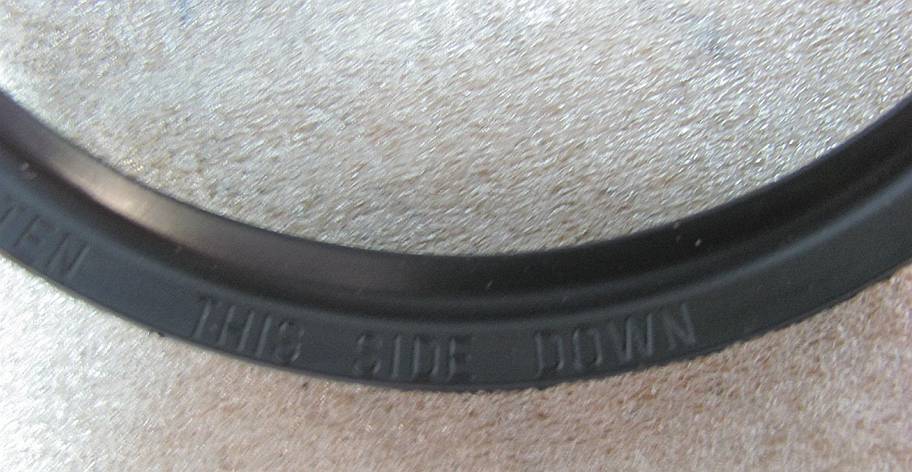
I chose to
reinstall the lid before pressing the seal down into the tank, no fears of
dropping the canister in to the tank with the lid in place. The lid can be
installed incorrectly, note the fuel line connector location before installing.
The seal has a lip on the bottom and top to wrap around the tank receiver, I
started the seal in one spot and carefully worked around the perimeter until it
was fully seated. It will be flat when seated correctly, it does take a little
work since it is a confined space and the lower lip has to be maneuvered down
and around, but perseverance pays off:

Carefully
press the canister down into the seal and make sure that the canister tab aligns
with the tank receiver before reinstalling the metal retaining ring (since I
had no way to torque the metal ring, I just made sure the words around the
perimeter were in the same place as they were before I removed the ring when
reinstalling/tightening) - DONE J
Almost.
Before starting the car to check for leaks and operation, turn the key to position
2 a few times (the position right before starting where the idiot lights come
on) letting the fuel pump cycle to prime the fuel pump. Start the car and check
for leaks. If all is well, install the seat and clean up.
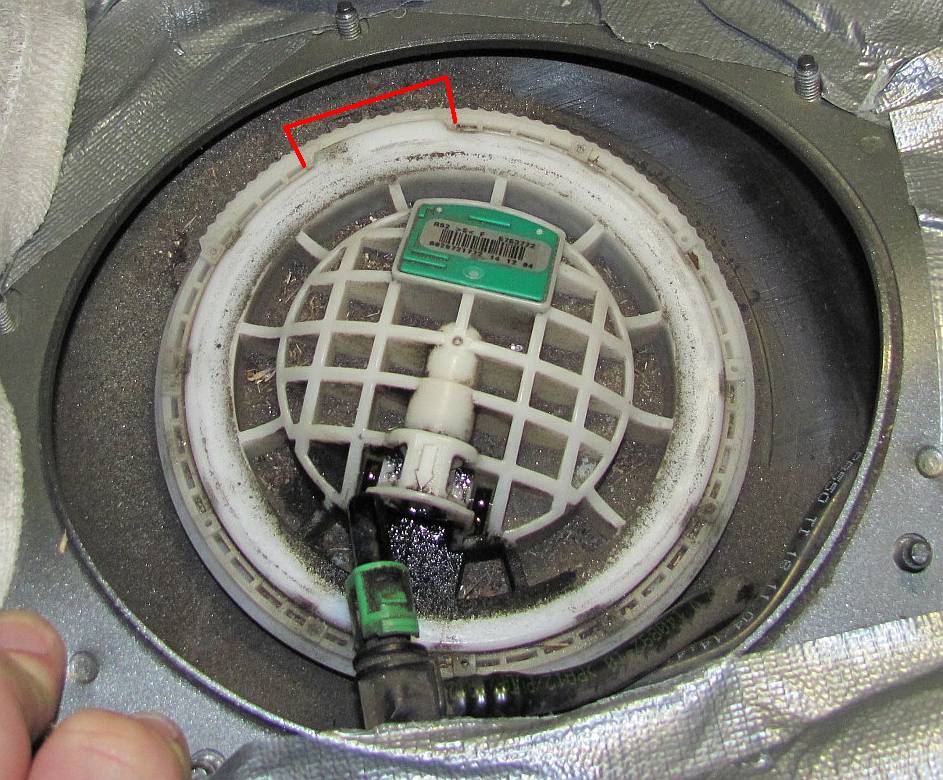
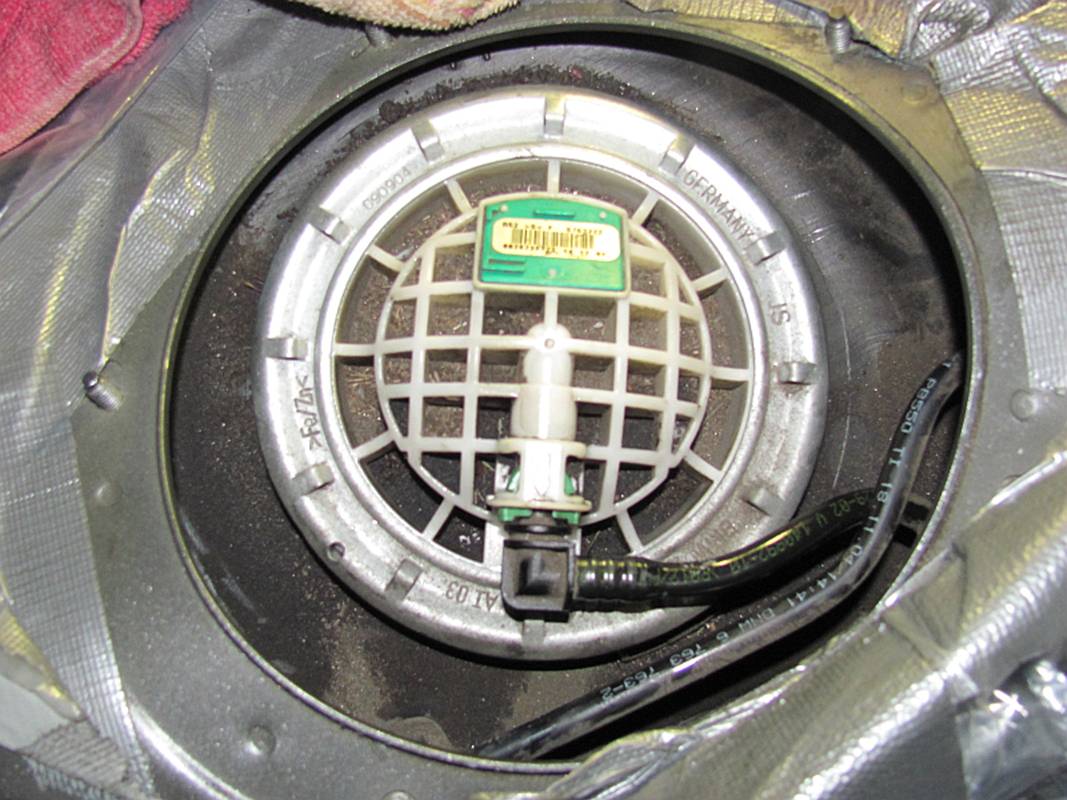
TIS Instructions and Torque Specs:
